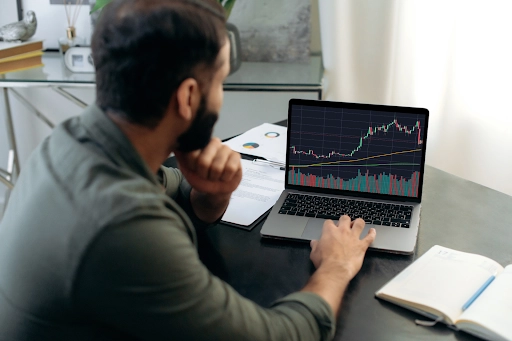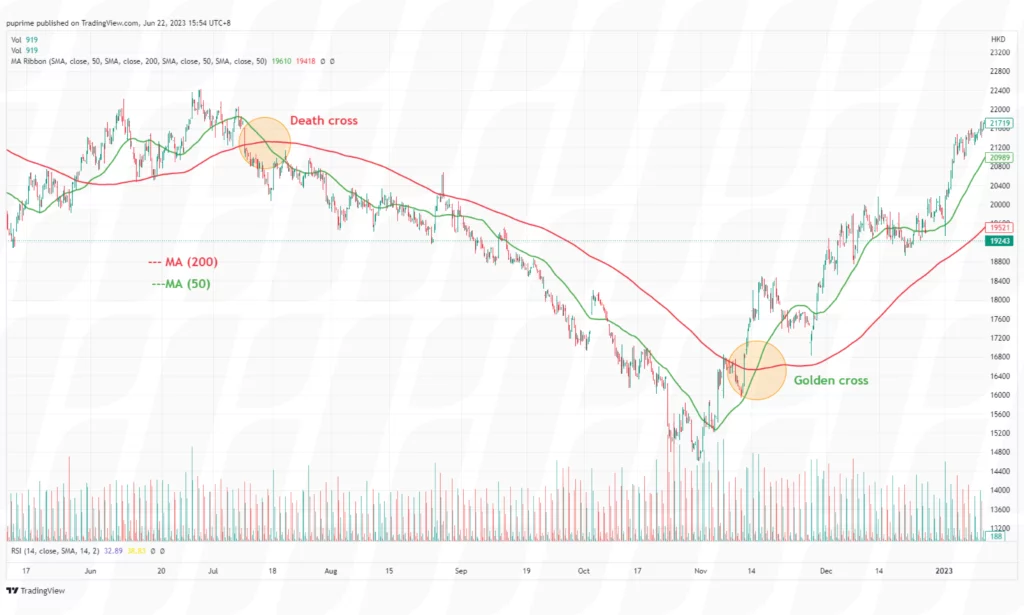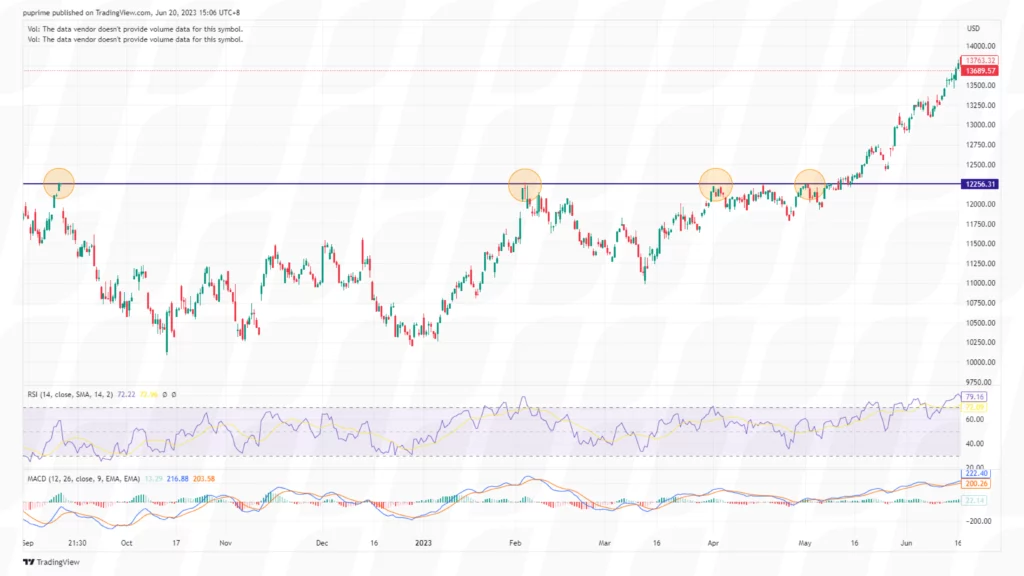
PU Prime App
Exclusive deals on mobile



PU Prime App
Exclusive deals on mobile


Hold The Global Markets In Your Hands
Our trading mobile app is compatible with most smart devices. Download the App now and start trading with PU Prime on any device, anytime and anywhere.

Position trading is a popular investment strategy that allows traders to take advantage of long-term market trends. By holding positions for extended periods, position traders aim to capitalize on significant price movements and maximize their investment returns. Unlike short-term trading or day trading, which focus on quick profits from short-lived price fluctuations, position trading emphasizes the broader market context and long-term growth potential. This article will provide a comprehensive guide to position trading strategies, helping traders understand the various approaches and techniques that can be employed to succeed in the dynamic financial markets.
Position trading is a long-term approach where traders hold positions for weeks, months, or even years to capitalize on major market trends. It involves analyzing fundamental factors, macroeconomic indicators, company earnings, and market trends to identify assets with long-term growth potential. Position traders aim to capture the overall trend of a market or an individual security and attempt to profit from substantial price movements. Unlike short-term traders who focus on short-lived price fluctuations, position traders have an extended time horizon and are less concerned with day-to-day market volatility.
Position trading offers reduced time commitment compared to short-term trading, allowing investors with limited availability to participate in long-term investment opportunities. Furthermore, position trading aligns with fundamental analysis and diversification principles, promoting informed decision-making and risk mitigation. Overall, position trading offers a valuable approach for investors seeking long-term growth while minimizing the stress associated with constant market monitoring and reactive trading decisions.
Position trading includes various strategies that traders employ to navigate the dynamic financial markets and maximize their investment returns. By understanding and utilizing these strategies, traders can make informed decisions and adapt their positions based on their investment goals, risk tolerance, and market conditions.

The trend following strategy is a popular approach within position trading. Traders employing this strategy identify and capitalize on major market trends. They use technical analysis tools such as moving averages, trendlines, and price patterns to recognize trend reversals or continuations. By entering positions in the direction of the prevailing trend and holding them until the trend shows signs of weakening or reversing, trend followers aim to profit from sustained price movements.

Breakout trading is a strategy employed by position traders to identify assets that are consolidating within a range or pattern and enter positions when the price breaks out of that range. Traders anticipate that the breakout will lead to a sustained trend and attempt to ride the resulting price momentum. This strategy involves setting up entry and exit points based on technical indicators such as support and resistance levels, chart patterns, and volume analysis.
Value investing is a renowned position trading strategy pioneered by Benjamin Graham and popularized by Warren Buffett. Traders utilizing this strategy search for assets they believe are undervalued based on their fundamental analysis. They carefully analyze a company’s financial statements, competitive position, growth potential, and intrinsic value. By investing in undervalued assets, value investors aim to benefit from the market’s eventual recognition and correction of the assets’ true worth over the long term.
Event-driven trading involves taking positions based on specific events that can significantly impact an asset’s price. Traders employing this strategy closely monitor events such as earnings announcements, mergers and acquisitions, regulatory changes, or other significant developments. By anticipating the impact of these events on the asset’s value, position traders position themselves accordingly, aiming to capitalize on the resulting price movements.

Position trading stands out among various trading strategies due to its long-term approach. Let’s compare it with other popular trading strategies to understand its unique characteristics:
Day trading involves making frequent trades within a single day, aiming to profit from short-term price fluctuations. In contrast, position trading takes a longer-term perspective and focuses on capturing sustained trends. While day trading requires active monitoring and quick decision-making, position trading offers a more relaxed approach, suitable for individuals with limited time availability.
Swing trading falls between day trading and position trading in terms of time horizon. Swing traders aim to capture shorter-term price swings within a trend. They hold positions for a few days to a few weeks. Position trading, on the other hand, involves holding positions for weeks, months, or even years. Position traders prioritize long-term growth potential over shorter-term swings.
Scalping is an ultra-short-term trading strategy where traders aim to profit from small price movements. Scalpers execute multiple trades within seconds or minutes, aiming for small gains. Position trading takes a completely different approach, as it focuses on identifying major market trends and capturing significant price movements over a more extended period.
Position trading, as with any investment strategy, comes with its own set of advantages and limitations. Understanding these can help traders make informed decisions and manage their expectations effectively.
Long-Term Profit Potential:
Position trading allows traders to capture significant price movements and potential long-term growth. By holding positions for extended periods, traders have the opportunity to benefit from sustained trends and maximize their profit potential.
Reduced Time Commitment:
Position trading is ideal for individuals who don’t have the time or resources to actively monitor the markets on a daily basis. Compared to day trading or short-term trading, position trading requires less frequent monitoring and decision-making.
Less Impacted By Short-Term Volatility:
Position traders focus on the broader market trends and are less concerned with short-term price fluctuations. This approach can help reduce the impact of market noise and volatility, allowing traders to stay focused on the long-term outlook.
Opportunity For Diversification:
Position trading offers the opportunity to diversify a portfolio by holding positions in various assets across different sectors and markets. Diversification can help mitigate risks and potentially enhance overall portfolio performance.

Longer Time Horizon For Returns:
Position trading requires patience, as returns are realized over an extended period. Traders must be willing to wait for the market to unfold and be prepared for potential periods of slower or negative returns.
Exposure To Market Risks:
Holding positions for extended periods exposes traders to market risks, such as economic downturns, geopolitical events, or unexpected company-specific developments. Traders must carefully manage their risk exposure and stay informed about market conditions.
Opportunity Cost Of Capital:
Since position trading involves holding positions for longer durations, capital is tied up and unavailable for other investment opportunities. Traders should consider the potential opportunity cost of not being able to allocate capital to potentially more profitable short-term trades.
Psychological Challenges:
Position trading requires discipline and the ability to withstand short-term market fluctuations without succumbing to emotional decision-making. Traders must develop a strong mindset to avoid making impulsive trades based on fear or greed.
The Cost of Leveraged Trading:
If you are trading forex or CFDs, holding a leveraged position overnight will usually incur swap or overnight fees. These fees are usually charged by your broker and quoted by their liquidity providers, and are calculated on a per-day basis.
While traditional unleveraged investments like holding actual company stocks or even physical gold might seem more suited for position trading (since they do not incur overnight fees), there are cases when CFD trading might be preferable based on your trading strategy. For example, when the advantages of having the ability to use higher leverages outweighs the cost of overnight fees. Making a position play trading spot forex without leverage effectively means you are tying up a huge sum of capital for this trade, which you could be holding for weeks or even months. To put things into perspective, a standard lot of FX is 100,000 units of currency, which would be unfeasible for most retail traders.
Position trading offers a powerful approach to long-term investment, enabling traders to capitalize on significant market trends. By employing different strategies such as trend following, breakout trading, value investing, or event-driven trading, traders can adapt their approach to suit their investment goals and risk tolerance. Understanding the principles and strategies involved in position trading will empower investors to make informed decisions and navigate the financial markets with confidence. With thorough research, disciplined execution, and a long-term perspective, position trading can be a rewarding investment strategy for those seeking sustainable growth in the dynamic world of finance.

Trade forex, indices, metal, and more at industry-low spreads and lightning-fast execution.
Sign up for a PU Prime Live Account with our hassle-free process.
Effortlessly fund your account with a wide range of channels and accepted currencies.
Access hundreds of instruments under market-leading trading conditions.
Please note the Website is intended for individuals residing in jurisdictions where accessing the Website is permitted by law.
Please note that PU Prime and its affiliated entities are neither established nor operating in your home jurisdiction.
By clicking the "Acknowledge" button, you confirm that you are entering this website solely based on your initiative and not as a result of any specific marketing outreach. You wish to obtain information from this website which is provided on reverse solicitation in accordance with the laws of your home jurisdiction.
Thank You for Your Acknowledgement!
Ten en cuenta que el sitio web está destinado a personas que residen en jurisdicciones donde el acceso al sitio web está permitido por la ley.
Ten en cuenta que PU Prime y sus entidades afiliadas no están establecidas ni operan en tu jurisdicción de origen.
Al hacer clic en el botón "Aceptar", confirmas que estás ingresando a este sitio web por tu propia iniciativa y no como resultado de ningún esfuerzo de marketing específico. Deseas obtener información de este sitio web que se proporciona mediante solicitud inversa de acuerdo con las leyes de tu jurisdicción de origen.
Thank You for Your Acknowledgement!